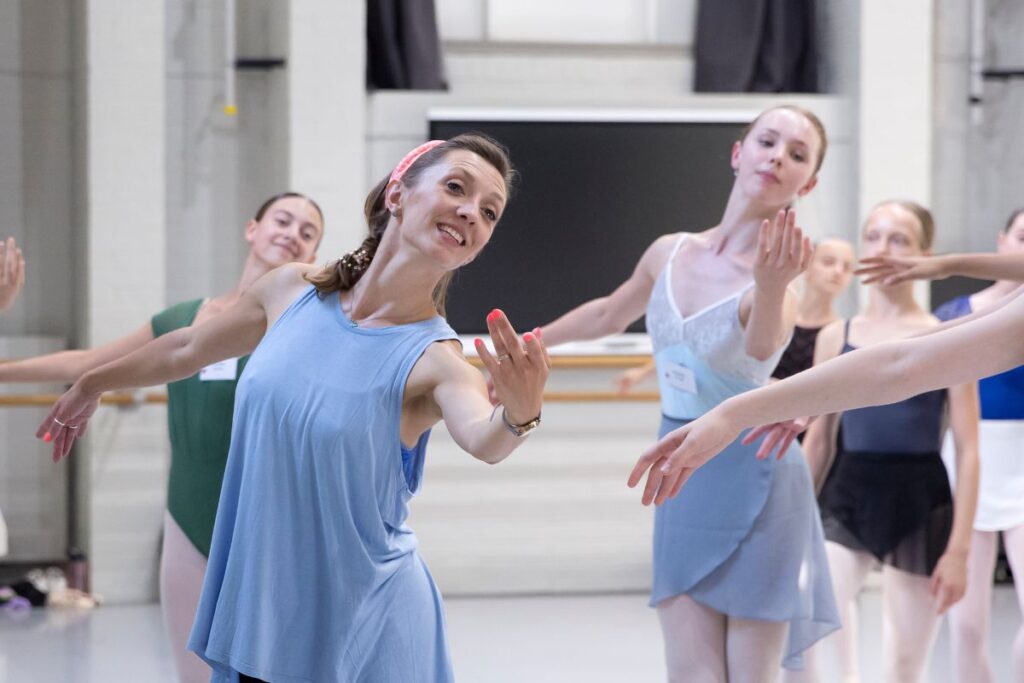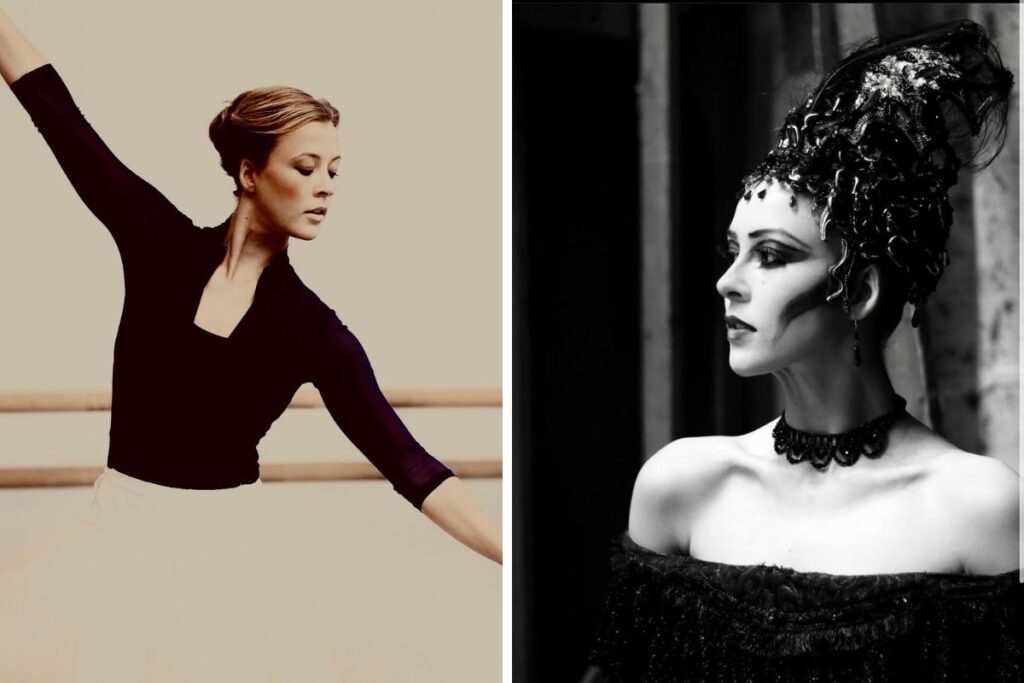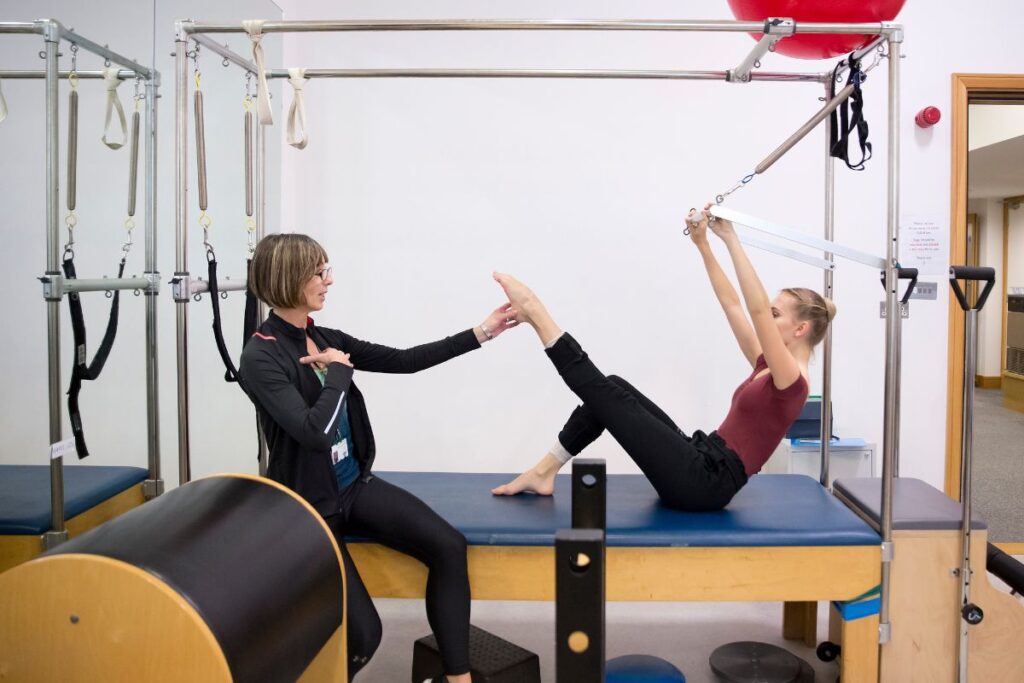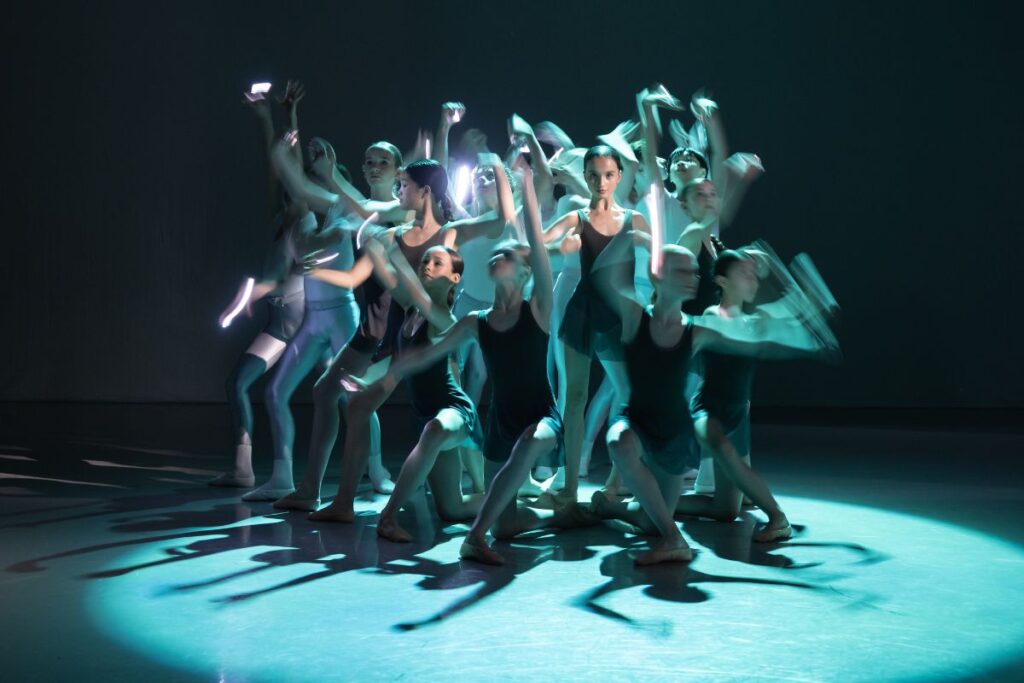Summer Performance spotlight: Ruth Brill on her new work
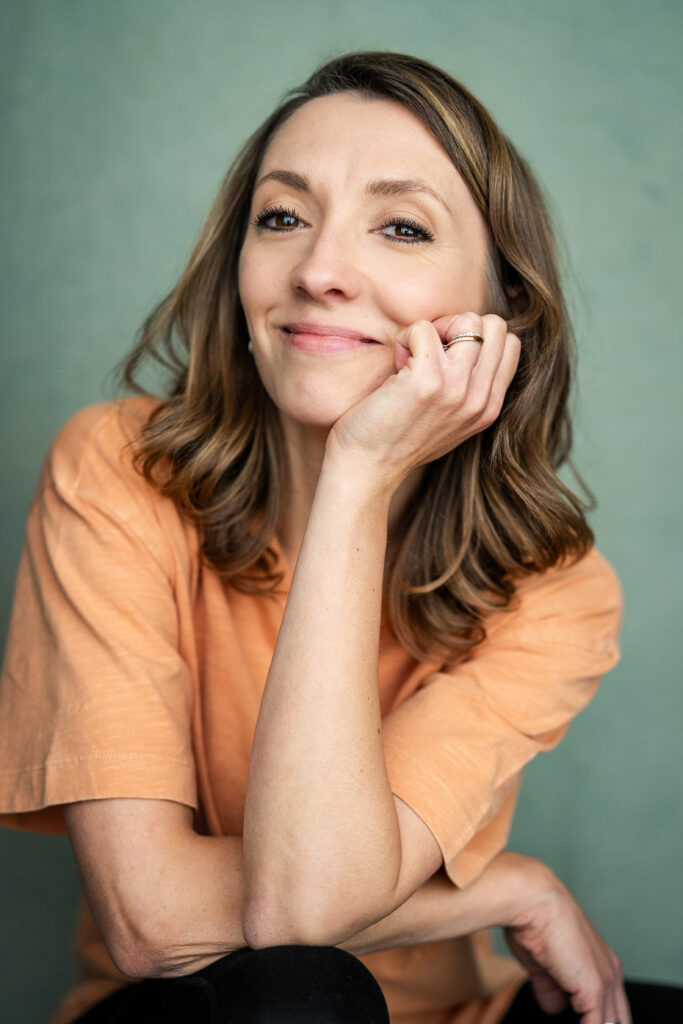
Ruth Brill is a freelance choreographer and the Artistic Director of the renowned London Children’s Ballet. As a dancer, she performed with both English National Ballet (2007-2012) and Birmingham Royal Ballet (2012-2019).
Ruth was last at the School in 2022, when she created Summer Dreams for our Year 7 students. This year, we are thrilled to have Ruth back in our studios again as she creates a new work for our Year 7, 8 and 9 students to be premiered at this year’s Summer Performances. We sat down with Ruth to discuss her new work, and the process so far of collaborating with the students.
Can you share the title of your new work?
The piece is called Garden Suite for a few reasons. Firstly, because it is set to Stravinsky’s Suites for Small Orchestra 1 & 2, secondly, because the ballet is set in a wildflower garden, and finally because it will be performed both at Opera Holland Park and at the Royal Opera House in Covent Garden.
Music and narrative are both important parts of your choreographic process. Can you expand on the music and narrative inspiration behind Garden Suite?
My brief from Iain was to create a characterful and expressive classical piece, that gives the young dancers a chance to shine and express themselves. My starting point is always the music. I asked the musical brains of respected friends and colleagues for any suggestions and thanks to a suggestion from Paul Murphy (Music Director of Birmingham Royal Ballet), I ended up choosing Stravinsky’s Suites for Small Orchestra 1 and 2. The music conjured so many vivid ideas in my mind as soon as I heard it. It felt so fresh and characterful. I wanted to give each year group a role that was the right fit for them, to allow them to shine, so needed that variety to be there in the music.
I always study the music very carefully and listen to it over and over and over again, before creating a single step. I had the idea of setting the piece in a wildflower garden and I could suddenly hear the ants, the bees, the grasshoppers, and the flowers in the music.
The piece is loosely linked to Aesop’s fable of The Ant and the Grasshopper, which for younger generations is the movie of A Bug’s Life. The moral of the story is a lovely parallel to the mentality of training as a dancer: like an ant, you work hard every day and support your teammates. You show up, you commit, you prepare, so that when winter comes, you’re ready. Hard work, kindness and dedication pays off.
How do you incorporate these elements into the creation of the piece?
The first thing I do is sit down with the dancers in the studio and share my initial ideas with them. It is key to get the students to hear what I hear in the music: getting them to hear the character, feel the emotion or dynamic at specific moments in the score, whether a specific instrument, the melody or other layers in the music.
The dancers have come up with some wonderful ideas. When we talk about the character they’re playing, their ideas are often incorporated into the choreography. We decide which ideas work and which don’t, but I welcome their input. It gives them a sense of ownership of the piece. Even though they’re young, their brains are full and eyes are sparkling with inspiration. It’s always better to have two brains – or a room full of brains – than just one! Most important of all, I want them to enjoy and learn from the process of having a new work created especially for them.
What are you enjoying most about working with the students?
Working with the students has been wonderful. They are enthusiastic, respectful, engaged, and present. They retain information: every correction or idea they are given, they soak it up like sponges. It is wonderful to see them helping each other too. If someone is struggling with a certain step, another will help. The Year 7 group, in particular, really care for each other as a year group, which is why it fits so nicely that they are the ants, it’s all about that team spirit.
We’re all in this art form because we’re passionate and love it. You dedicate your life to it, and I still feel lucky to be doing what I’m doing. But it all starts from that early spark of inspiration as a youngster. To see that in their eyes every time I walk in the room is amazing.
I also really enjoy seeing how different they all are. They’re not all trying to be identical. They are not scared to speak up and suggest something. I think the culture now encourages them to have input, to be interesting individuals with ideas. I feel that in the room. They’re not just standing there waiting to be told what to do.
What draws you to working with young people?
Most of my earliest works as a professional choreographer were for Birmingham Royal Ballet. In 2019, I left to pursue my freelance choreographic career and take on the role of Artistic Director at London Children’s Ballet. Despite coming from working with adult professionals, what drew me to London Children’s Ballet was that children are capable of so much. If you put talented children into a professional performance setting, they rise to the challenge. If you give them the information, support, and opportunity, they can match the standards of a professional production.
If you give them the stage, the quality of costumes, incredible music; everything at a professional level, they rise to it. You almost forget that they’re young. To see them rise to that level and grow in confidence on their journeys is rewarding.
What do you hope the students take away from working with you on this piece?
Even as a professional dancer, having a work created on you and for you, working with a choreographer is an incredible experience. The fact that these dancers are getting this opportunity at such a young age is amazing. They are not just dancing to recycled repertoire and being taught set steps, they are part of the formation of the piece. They see something grow from nothing and end up with a real, living, breathing production, with costumes, set, and live orchestra.
They are also learning to dance as a group, as a team, and learning what it’s like to be a professional in a company, to work together. You can win a ballet competition, but you can’t win being a ballet dancer as a career. Getting into a vocational school or company is just the beginning. Then you work day in and day out, working on yourself, learning from and caring for your co-workers. Every single dancer has value. It’s not just about who is the best. I want these young people to learn that everyone matters.
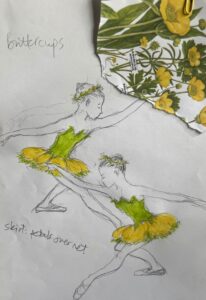
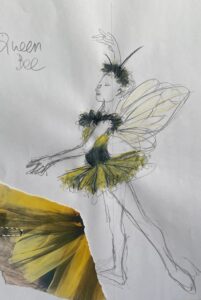
In 2022, you created a piece for our Summer Performances which was performed at Opera Holland Park. This year, your new work will premiere at both OHP and on the main stage of the Royal Opera House. How are you feeling about that?
I’ve had my works performed at venues like Sadler’s Wells, Birmingham Hippodrome, the Peacock and the London Palladium but The Royal Opera House stage is the absolute pinnacle. To have my work performed on that stage will be a real pinch me moment!
It’s lovely to have been invited back to the School, and it also feels like a progression. The first piece I made was for one year group and much shorter, and we sourced existing costumes. This time, we’re building a new piece across all the creative elements – new choreography, new costumes (designed by Kate Ford) and new set (designed by Laura Foy). We have incredible creatives on board. We have an amazing team of costume makers who are bringing the designs to reality.
Knowing that the piece will be performed with a live orchestra at the Royal Opera House is such a draw for me. Live music is SO important in our art form, it elevates everything to another level and the audience and performers feel that.
I also feel very supported by the Artistic Staff at the School. I’ve loved creating the piece within the setting of White Lodge. It’s like another world coming through Richmond Park, stopping to let the deer pass and then working in the beautiful studios with light streaming through the windows. It’s an inspiring place. You sense the history within the walls, and it feels like you’re a part of something bigger.
What can audiences expect this new work and what do you hope they take away from the performance?
I hope the piece brings joy to both the audience and the dancers. It’s a piece full of colour and character. I want the young dancers to get out there, shine, be themselves, and feel proud of what we’ve created. I also want them to have fun with it. When the dancers enjoy what they’re doing, the audience feels it.
Don’t miss the premiere of Garden Suite at our Summer Performances this July, book your tickets today.

